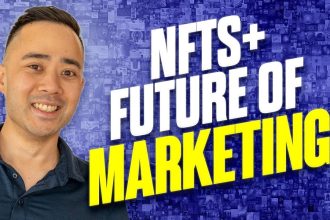The importance of creating professional content that stands out and engages the audience cannot be overstated in today’s world. One effective way to do this is through the art of storytelling. By incorporating storytelling elements into your professional content, you can capture your audience’s attention and effectively convey your message in a memorable and impactful way.
This blog post will explore the art of creating story-like professional content for maximum impact. We will look at how to identify the key message you want to convey, craft a compelling narrative, and use visuals to enhance the story.
Identifying the key message
As you create your story-like professional content, you must first identify the key message you want to convey. This will serve as the foundation for your entire piece and help guide your storytelling efforts.
To determine the critical message of your content, start by defining the purpose of the piece. Are you trying to educate your audience about a particular topic? Are you trying to persuade them to take a specific action? By clearly defining the purpose of your content, you’ll be able to zero in on the message you want to convey.
Next, consider your target audience. Who are you trying to reach with this content? What are their needs, interests, and values? Understanding your audience will help you craft a message that resonates with them and speaks to their concerns.
Crafting a compelling narrative
Now that you’ve identified the critical message of your content, it’s time to start crafting a compelling narrative around it. A strong narrative is essential for engaging your audience and bringing your message to life.
To create a compelling narrative, consider incorporating characters into your story. These can be real or fictional people, but they should be relatable and help the audience connect with the content on a deeper level.
Another essential element of crafting a narrative is using plot structure. This means organizing your content into a clear beginning, middle, and end, with an apparent conflict and resolution. This helps keep the audience engaged and invested in the story.
Incorporating conflict and resolution into your story is also crucial. The conflict should stand in the way of the characters achieving their goal, and the resolution should be how they overcome this conflict. This helps create tension and keeps the audience on the edge of their seats.
As you craft your narrative, use descriptive language to help the audience visualize and engage with the story. This can be particularly effective when combined with multimedia elements, such as images and video, which we’ll discuss in the next section.
By using these storytelling techniques, you’ll be able to create professional content that is informative, captivating, and memorable.
Using visual elements to enhance the story
Incorporating visual elements into your story-like professional content can be a powerful way to engage your audience and enhance the impact of your message. According to a study, 90% of information transmitted to the brain is visual, and visuals are processed 60,000 times faster in the brain than text. Including visual elements in your content can help your audience understand and remember your message better.
There are many ways to use visual elements to enhance your story. One effective method is to include relevant images, such as photographs or graphics. These can bring the story to life and provide context for the audience.
Another way to use visual elements is to incorporate video. Video has become increasingly popular in recent years, and for a good reason. It’s an engaging medium that allows you to convey your message in a visual and auditory way. In fact, a study by Wyzowl found that 94% of marketers found that video has helped them increase their understanding of a product or service.
In addition to images and videos, you can also use interactive elements, such as infographics or interactive videos, to help bring your story to life. When using visual elements to enhance your story, be sure to choose ones that are high quality and relevant to your message.
Conclusion
Creating story-like professional content can be an effective way to engage your audience and effectively convey your message. By using storytelling techniques, crafting a compelling narrative, and incorporating high-quality visuals, you can ensure your content has maximum impact.
You can also use a platform like Blackbaud to help create story-like content. It is easier to create professional cotent easily that stands out and resonates with your audience.















